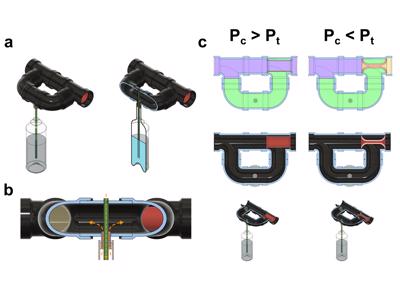At the beginning of the COVID-19 pandemic, when it was not clear at what scale respiratory support in the form of mechanical ventilation systems would be required, we began development of an ultra-low-cost negative-pressure ventilation system (analogous to the "iron lung" systems used in previous polio outbreaks). At this time the scale of the need was not clear, and many others were developing excellent accessible but still relatively-high-tech devices. To complement this work, we chose to focus on implementing the "minimum viable product" - what is the simplest possible device, with the lowest possible manufacturing demands, that would deliver the core functionality? This is not the ventilator I would want for myself or my family if modern high-technology systems were available - but it is the backup plan I would want, and would be able to build in quantity, if there were no other options.
This project does not provide a completed ventilator design. The larger regional ventilator working group I was involved with focused on higher-function approaches as it was determined that the need within Canada was not going to be severe enough to require this one. I have since engaged with a few groups internationally, and while there has been some interest, we have so far not found a need. It may be that it is not needed anywhere, and that would be great.
However, in case there is a need for low-cost, low-technology systems of this type, I am uploading a summary of the work (see Repository / Hardware). That document is currently dividing into two sections, Part I covers background on ventilation and NPV in general, while Part II describes the concepts and their testing. I am happy for any of the ideas or components to be re-used in any form that is useful, with or without my involvement. I also have some ideas around a more conventionally manufacturable medical device, taking advantage of the principles here to enable low-cost mass-production in a format more consistent with regulatory approvals processes.

Medical tags
- Clinical need
- Non-surgical therapy / Administration of drugs
- Area
- Pneumology / chest medicine
- Technology
- Other supporting equipment
- Project keywords
- ventilator, NPV, negative pressure ventilation, minimal viable product